



























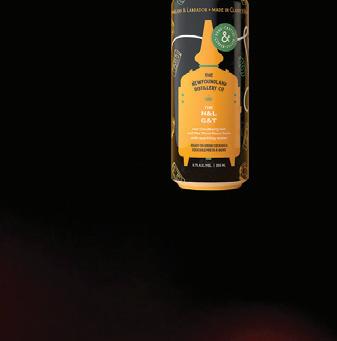









I will admit it: I’m not a craftsperson. I lack the patience and detailed attention it takes to become a master of craft over months, years, decades. However, this only heightens the respect I have for the incredibly skilled and hardworking artisans of Newfoundland and Labrador.
This artisan issue shares the stories of those who uphold the cultural identity of the province by sharing in craft, a beautiful Newfoundland custom that creates community and preserves heritage. In the knitting of berry-picking mittens, in the mixing of a perfect cocktail and in the baking of a hearty pizza, these talented craftspeople remind us of the value found in handmade products and the joy that comes from creativity. In a world otherwise eager to leave meaningful tradition behind, artisans encourage us to step back and appreciate the beauty of the land, food and people around us. And that’s a perspective worth preserving.
EDITOR
Danielle Steiner CONTRIBUTORS
Connie Boland
F.A. Boothroyd
Terry Bursey
Lori McCarthy
Ritche Perez
Gabby Peyton
Danielle Steiner
Marsha Tulk
EDITORS-IN-CHIEF, DESIGNERS / PUBLISHERS
Sara & Dave Snow, Steadii Creative Inc.
THANK YOU
To all of you—our readers, advertisers, contributors, our friends and family for supporting local and independent print media. We couldn't do it without you!
SUBSCRIBE
edible Newfoundland & Labrador is published 4 times a year. Subscriptions are $32 and available at ediblenl.ca
REACH OUT
ediblenl.ca
@ediblenewfoundlandlabrador hello@ediblenl.ca
ADVERTISE WITH US
Brianna Young, Sales Associate sales@ediblenl.ca
No part of this publication may be used without written permission by the publisher. Every effort is made to avoid errors, misspellings and omissions. If, however, an error comes to your attention, please accept our sincere apologies and notify us. Thank you.
© 2023 Steadii Creative Inc.
All rights reserved.
St. Andrews, NB, E5B 1C5
edible Newfoundland & Labrador is proudly created entirely by humans and printed in Canada on paper made of material from well-managed, FSC®-certified forests, from recycled material and other controlled sources.
Through 1% for the Planet we contribute one percent of our revenue to environmental non-profits. Read
pick berries From Mi’kmaq Online an online talking dictionary since 1997 https://www.mikmaqonline.org/ servlet/words/mewisit.html

We respectfully acknowledge that these lands are the ancestral homelands of the Beothuk, whose culture has been lost forever and can never be recovered. We also acknowledge the island of Ktaqmkuk (Newfoundland) as the unceded, traditional territory of the Beothuk and the Mi’kmaq. We acknowledge Labrador as the traditional and ancestral homelands of the Innu of Nitassinan, the Inuit of Nunatsiavut, and the Inuit of NunatuKavut. We stand with all of them in their efforts for land and water protection and restoration, and for cultural healing and recovery.
edible Newfoundland & Labrador


We were walking home after a day spent fishing for Arctic char. The road was dusty, the air was hot—and we were thoroughly disappointed.
Local residents said the elusive fish were running, but our backpacks were as empty as the promise of a 30-degree day in the Nunatsiavut region in mid-February. I had never tasted the silver fish that every man, woman and child in Nain assured me was the most delicious I would ever eat.
“Any luck?” a gentleman called to us from his driveway.
“Not today,” my partner answered. “How about you?”
“I got char, and a seal,” Tony Andersen said, waving us over. For the next half hour, we chatted about fishing, and why Bill and I were on Labrador’s north coast (I teach Adult Basic Education and Bill had joined me for a few weeks). Tony offered us char for our supper, smiling at our reluctance to accept the gift. “We share food that comes from the land,” Tony explained. “Sharing
food sustains our community, and you are part of our community.”
Back home on the island of Newfoundland, I think about that a lot. Food is expensive in the north. Food security can be an issue in remote towns like Nain, which is serviced by coastal boat from June to December. Freight is flown in via Twin Otter, operated by Air Borealis. When the weather is down, it can be days between flights. Foraging sustains this community of about 1,200 residents.
Lightly salted and seared in a hot frying pan, our char tasted like a mix of trout and salmon. The flesh was deeper pink than salmon, almost red like a blood orange. Bill and I had purchased permits to access Labrador Inuit lands, which allowed us to harvest a maximum possession of two fish a day. I knew, after that first taste, what I would be doing every day after school.
I fished from Nain beach. I fished off rocks near the town dump. I fished “over across,” in the shadow of
Facing page: A popular fishing spot in Nain, Nunatsiavut
This page: Cleaning a freshly caught fish
Next page: Char filets drying; Connie and Bill Boland with their catch; char drying by the beach
Page 9: The catch


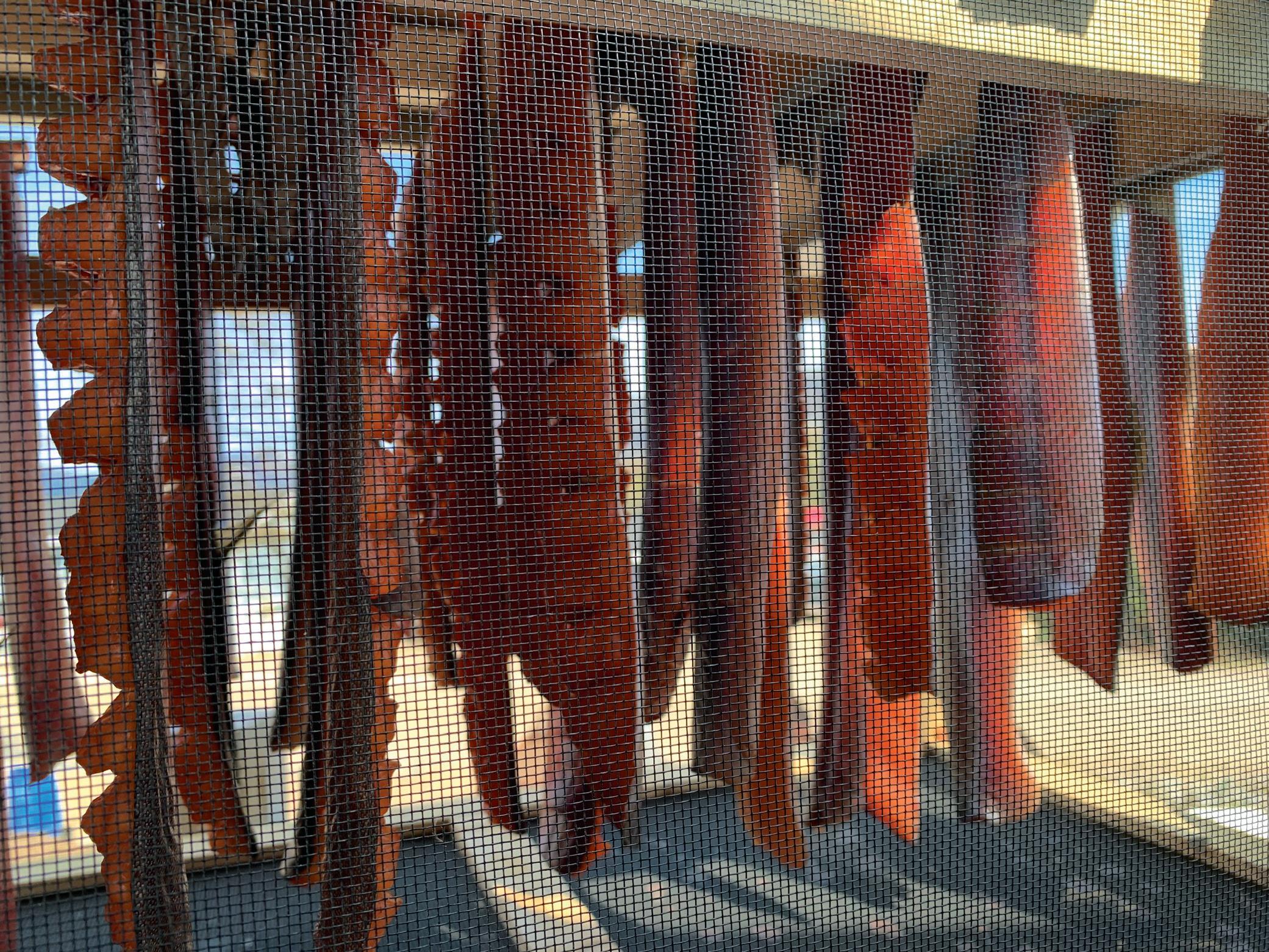

majestic Mount Sophie where some people hung filleted char to make pitsik. Char hung in doorways, under eves, and in wooden boxes to dry, tantalized me as I walked to school.
Full disclosure: until Lovey and Ernie Ford invited us to “go off,” I had never caught a fish. (In Nain, leaving town to harvest—hunt, fish, pick berries—is referred to as “going off.”) It was spectacular to sail from Nain harbour in their speedboat, with mountains rising from the ocean, and Ernie expertly navigating between small icebergs and pack ice. We saw black bears, eider ducks, seals and seagulls. We anchored off an island so that Ernie and Lovey could go egging—duck eggs have a deliciously fishy taste.
I will never forget that first tug on my lure, the sound of my reel spinning, the splash of char jumping. I clung to my fishing rod like a child clings to a favourite toy.
“Take the rod!” I yelled to everyone in the boat, desperate to not lose my fish. They laughed, but no one offered to help. Clearly, I was in this fight alone. The char swam with my line under the boat. It darted here, there and everywhere as I hung on. I was fairly sure either my wrist or the rod would snap.
“Bring it close to the boat,” someone instructed.
“Um, how?” I panted, swaying with the rhyme of the boat and the momentum of the fish.
“Just reel it in.”
Slowly, trying to remember the fundamentals of tight lines and fighting fish, I pulled and prayed, prayed and pulled. I cheered when Ernie dipped a net into the water and expertly flipped my fish into the boat. I wiggledanced while the others clapped. I looked at eight to ten pounds of withering char and was elated.

Much later, sitting on a beach drinking strong black tea and munching thick slices of homemade bread, we laughed about my initiation. We joked about my happy dance that rocked the boat from stem to stern, and how my catch was soon surpassed by bigger, heavier fish. A fox wandered into our clearing to see what all the excitement was about. It was a brilliant day.
In Nain, people who cannot “go off” are helped by those who can. The feeling of anticipation was palpable when the first char of the season arrived. Children squealed with excitement; adults cheered when a fish was pulled from the ocean.
We ate our char fried, broiled and boiled. We made char tacos, char salad and char chowder. We gave away what we did not need. In our own small way, I hope we helped a community that welcomed us with open arms.
Connie Boland is an award-winning freelance journalist, creative writer, and Adult Basic Education Instructor from Corner Brook.
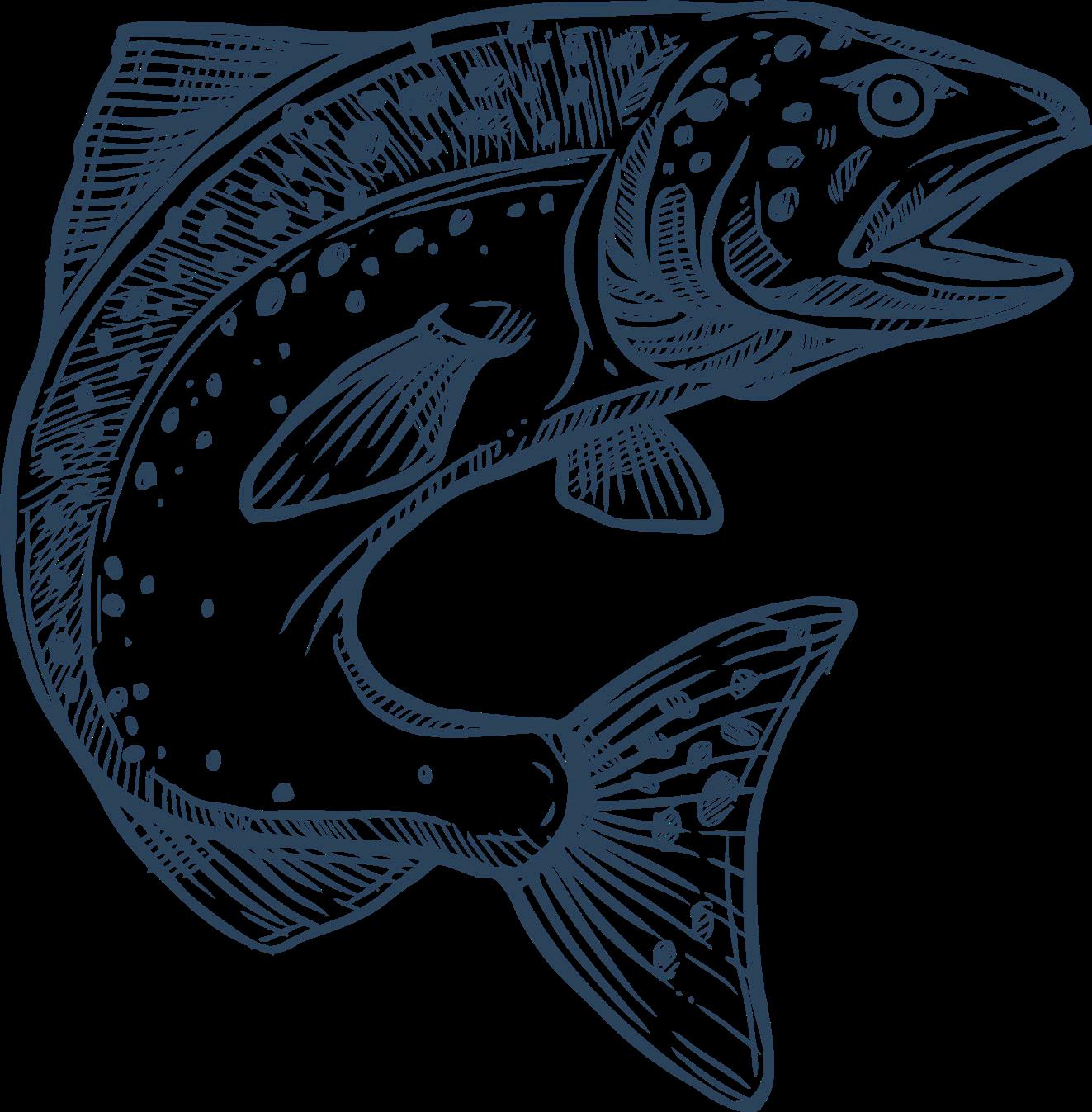
1 pound Arctic char fillets
3–4 teaspoons flour
1/2 teaspoon smoked paprika
1/2 teaspoon chili powder
1/4 teaspoon garlic powder
1/4 teaspoon salt
1/4 teaspoon pepper
1 cup rice
1 teaspoon taco seasoning
4–6 sundried tomato
Soft tortillas
Optional toppings: green onion, red and yellow pepper, fresh mushrooms, jalapeño pepper, sour cream, chipotle mayo, salsa, guacamole

The perfect way to enjoy your hard-won, freshly caught Arctic char, easy to adapt to all taste preferences by a simple adjustment of topping s.
Recipe by Connie & Bill Boland Serves 2 to 4
Cook 1 cup rice of your choice. Add taco seasoning to the water prior to cooking.
Mix flour and dry spices together. Cut char in bitesize pieces and roll each piece in your flour and spice mixture.
Preheat a frying pan on high heat. Once hot, add 3 to 4 tablespoons of virgin olive oil. Add char to fry pan and cook one minute on each side. Remove fish from pan. Let stand 2 minutes.
Heat the tortillas, if desired, in a second dry frying pan on medium high heat for 20 to 30 seconds on each side. Remove from pan.
Place a serving of rice and then fish on tortillas and serve with toppings of your choosing. Dig in!

Newfoundland knitter Linda Lewis lives her dream of a contented life in a quiet place
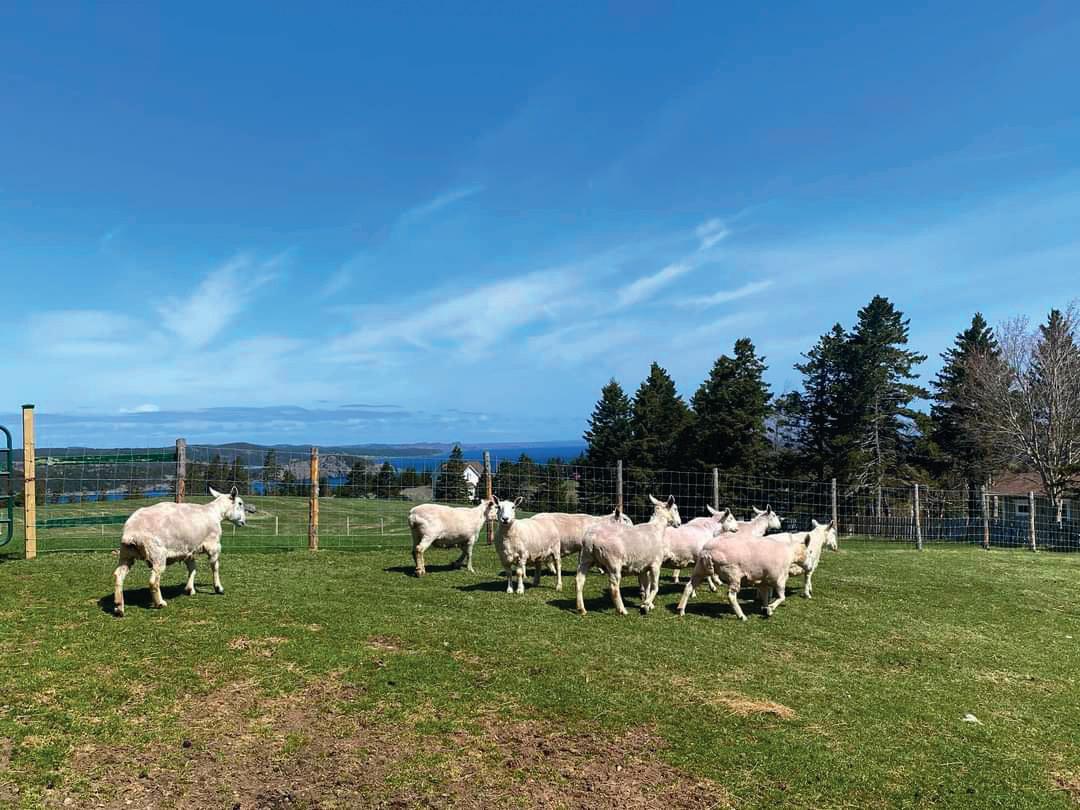 WORDS BY TERRY BURSEY
PHOTOS PROVIDED BY LINDA LEWIS
WORDS BY TERRY BURSEY
PHOTOS PROVIDED BY LINDA LEWIS
Nestled within the rugged banks of Newfoundland’s Avalon Peninsula, there is a quiet place. Here, where the island grasses are sweetened by a swath of pristine lakes, where Gerti the Angora goat enjoys a snooze under the last dying embers of the autumn sun, the sounds aren’t just muted by awe and arcadia—they’re also softened by wool.
Fahey Farm is the name of this quiet place, and it’s been that way for over two centuries—the oldest-known family farm in all of Newfoundland and Labrador. Handed down through generations of kith and kin since the year 1789, the farm eventually passed from its original owner, Edward Fahey, to grace the lives of descendant Bernard Lewis and his wife, Linda Lewis. It’s nurtured many different lives in the span of these untold and no doubt storied ages, but these days, it’s where Mrs. Lewis can be found spinning away at her wheel—harnessing the rich lifeblood of the acres to craft sweaters, shawls, scarves and other autumn comforts.
“Baynoddy,” Linda’s woollen goods business is called, a name first proposed by Linda’s mother, Doris Young, when Linda began her business on Fahey Farm in the autumn of 1988. Doris, Linda asserts, was a “bit of a linguist” in her teaching days, and had playfully thrust forward the name Baynoddy (an old-fashioned term often used by the denizens of St. John’s in reference to the “half-simple” folks living elsewhere on the island) as a nod to Linda’s desire for a quieter, yet wholly unique
lifestyle in the rural outskirts of Town. With that, Linda thought that “Baynoddy” would suit her business just fine.
“Because I was out in ‘The Bay,’ and had to be kind of nuts to be doing what I was doing,” Linda explains, when asked why her mom had thought the name appropriate. “I didn’t want to be working in St. John’s anymore…I was doin’ Baynoddy and insurance [business] at the same time back then, and I had enough of it.”
Spinning and knitting had always been Linda’s side hustle, so to speak, and her talent for doing so had earned her a bit of a reputation amongst her peers. Though she uses many different dyes to colour her natural fibres, her favourite part of the job, Linda says, has always been the knitting and spinning.
“I was always a knitter,” Linda says, as to what prompted her work with Baynoddy, “so at the time I thought: well, I might as well be sellin’ the stuff too!”
Of course, Linda’s aptitude for handspun creations isn’t all that separates Baynoddy and Fahey Farm from your average wool business. Incepting what would later be the main attraction of Baynoddy, Linda’s woollen goods didn’t start out with fibres made from sheep’s wool—but from rabbits.

“We started out with a bunch of Angora rabbits that we had come from Ontario,” Linda explains, “though over the years we’ve had llamas, Angora goats…the sheep we actually got from Russwood Claredale Farms on Roaches Line—they’re great friends of ours.”
Of course, farms are not without their fair share of hard work needing to be done, and all hands are on deck when it comes time to make the hay, a process that Linda Lewis says has often been the most difficult. Newfoundland has always been a place where the weather changes in the span of minutes rather than days, and with climate change throwing things out of their usual order, drying their hay has often been a bit of a gamble on top of a hard day’s work.
“We had the rain come when there was no rain forecasted, and that ruined a bit of work, for sure. The hay is always the hardest part. It can get wet right away.”
These days, only Linda works in her studio at her wheel, or humming amidst the clash of needles in her chair, and just nine sheep remain on Fahey Farm; the usual
menagerie of exotic animals having passed on over the years. That said, Linda asserts that her ninety-two-yearold mother, Doris, sometimes helps out from her cozy knitting nest in Admiral’s Coast Retirement Centre, and that Linda has sequestered away “more than a few stashes” of fibres from all of the animals that used to roam the picturesque farm, incorporating these precious fibres into the heartstrings of her goods to this day.
“We give all our animals a very good life. Everything around here dies of old age, and hopefully that will be us too.”
As for the future of Fahey Farm and Baynoddy, Mrs. Lewis says that her plans are to have it pass on for “at least a couple more generations,” not just to preserve the legacy of a farm that’s earned the Century Farm title twice over, but in hopes that the business she started as a means of attaining a more quiet life among the tranquility of the Newfoundland countryside will live on as well. With folks still clamouring from all corners of the island and elsewhere to get their hands on (and in) Linda’s beautiful and unique handcrafted treasures, Baynoddy is certainly an endeavor that’s withstood the test of time as well as the trials of change.
If you ever find yourself within the breathtaking landscape of Newfoundland’s upper Avalon and happen across a sign or two on the road that hint at a dream made real called Baynoddy, it may be worth your while to stop in. On top of a neat fall accessory, you might find a master of her craft, sitting in her chair, putting smiles on people’s faces, one stitch at a time.
Baynoddy Knitwear
135 Point Road, Chapel’s Cove, NL facebook.com/baynoddy
T.C. Bursey is a former food columnist for SaltWire and reporter for Kingstonist. He resides in CWT, Newfoundland, where he’s penning his debut Newfoundland sci-fi novel and volunteers as an ASD self advocate. tcbursey.com

Page 11 top: Lewis spinning with a view
Page 11 bottom: A view from the farm
Left: Baynoddy Knitwear at the Fahey Farm
This page: Wool and knitwear in the shop
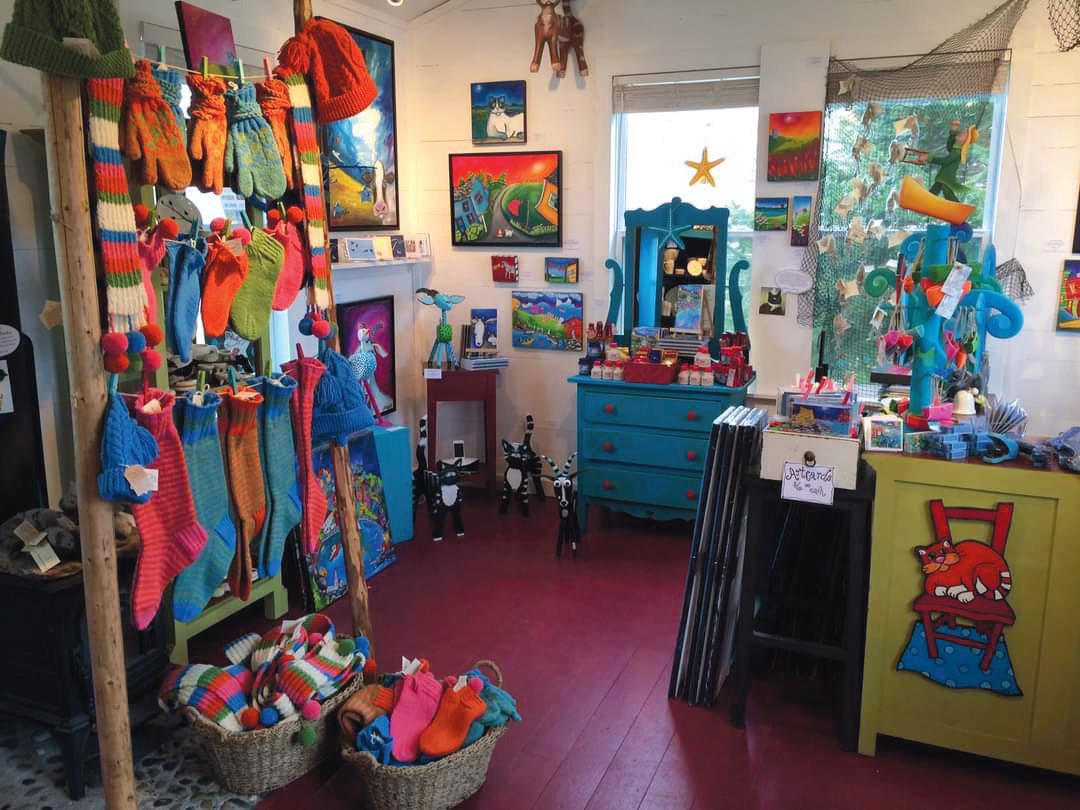

Foraging for berries and mushrooms is a practice steeped in tradition and carried on in joy
WORDS BY LORI MCCARTHY PHOTOS BY MARSHA TULK
Don’t eat that, it’s poison!”
If you were to talk to my mom, or anyone from my mom’s generation, most of them would probably say that they heard this a lot while growing up in Newfoundland.
Today, amongst the younger generations, harvesting food from the land is often referred to as foraging, but here on the island, it’s simply called pickin’. Pickin’ berries, pickin’ dandelions, pickin’ mushrooms— pickin’ anything. Once a real necessity for sustenance to prepare for the long winter, the practice today is mostly tradition, one of great importance to maintaining our culture. The purpose, however, is always the same: to pick and harvest enough of the season’s bounty to fill the pantry with bottles and bottles, to be enjoyed later in the year.
Preparing for those little moments of summer flavour
up at Christmas, in February and in March and all the other eight months of the year when almost nothing grows here on the island, ever appreciated by friends and family who also get to enjoy them as gifts of a labour of love.
There is nothing from my childhood I remember as delicious as the fall berry season. A beautiful fall day, the whole family in tow, over the Pouch Cove berry grounds for the day and stopping for a cuppa tea and a boil-up for lunch. These are memories of family and good times together that last forever.
Today, I still very much enjoy berry picking and making preserves for the pantry; however, my pickin’ has certainly grown in variety. My pantry has a diversity that my mother’s does not have, holding a montage of bubbling fermentations that include chaga kombucha, wild yarrow vinegar, lacto-fermented chuckley pears and my new favourite, lacto-fermented mushrooms.


My approach is a little different, to say the least, but then again, the access to knowledge for myself and my children is something that my mother’s generation did not have. This knowledge has come from many places: from chefs coming from all over the world, to people moving here from away and sharing their knowledge, and the general rise in the interest of foraging. I’ve gone all in on curiosity and possibilities of wild food, and it’s brought incredible adventures in food and people to my life.
One of those people is Marsha Tulk. Marsha is from the West Coast of the island and is an incredible photographer.
“I don’t suppose you want to write a book together?” I asked her after only a few months of knowing her. Much to my absolute surprise, she said “Sure!” I laughed, and our book, Food Culture Place, became the beginning of a friendship that still lives for food adventures, long kitchen hours prepping for Wild Food Dinners and trips across the island in search of amazing wild foods. Now we’re on to filming our second season of East Coast Forager, and the search for incredible foods of this island continues.

I was lucky enough to become one of the few that she shared one of her favourite food adventures with: her big mushroom trip to the very undisclosed location for her annual harvest. (People’s protection of their mushroom patches is a real thing!)
I’m not sure if it was the part where I was devoured by flies thicker than I have ever been in, or the ground absolutely orange with chanterelles for as long as I could see, but to say the least, I have never experienced anything like either. Crawling around on our hands and knees in the heat, under the trees, in full head-to-toe fly suits is something I’ll never forget, but the bounty and the laughs is always worth the trip.
The trip is one thing; the processing is another. It’s something that I speak of often. I know it’s so exciting that a particular plant, flower, berry or mushroom is in season, but we can all remind ourselves that if we don’t have the time to process it all, leave it where it is for someone or something else. Whether that’s a bear, a bird or the mushroom hunters coming behind you.
This is a message that is worth spreading, because we all want these beautiful resources to be here for generations to come. We are not always aware of the role that these plants, fungi and wild edibles play in the larger ecosystem, so pick with care and attention. Take only what you need, can consume and can process.
If you’re new to the world of fungi in particular, know this: they all look different at every stage, so you should not pick based solely on a guide book photo, an identification app or what the internet says it might be. A healthy fear of mushrooms is warranted. Find the fun in identification, in hiking through the woods, picking to make spore prints or making “magic potions” like we did as kids with mud and mushrooms. Press them into linens or dry them and push them into little airdried clay plates. These are all things I still do today as an adult, because it’s all good fun! If you want to consume, however, find someone who has been picking and eating that species for a long time, or someone who offers forging outings and begin your journey to a world of delicious foods beneath your feet.
Food Culture Place
foodcultureplace.ca @foodcultureplace
Lori McCarthy is the founder of Food Culture Place, a company dedicated to sharing a sense of place in Newfoundland, offering Cultural Food Residencies. foodcultureplace.ca | @foodcultureplace
Marsha Tulk is a photographer, recipe developer and awardwinning author of Food Culture Place. foodcultureplace.ca | @foodofgeneration
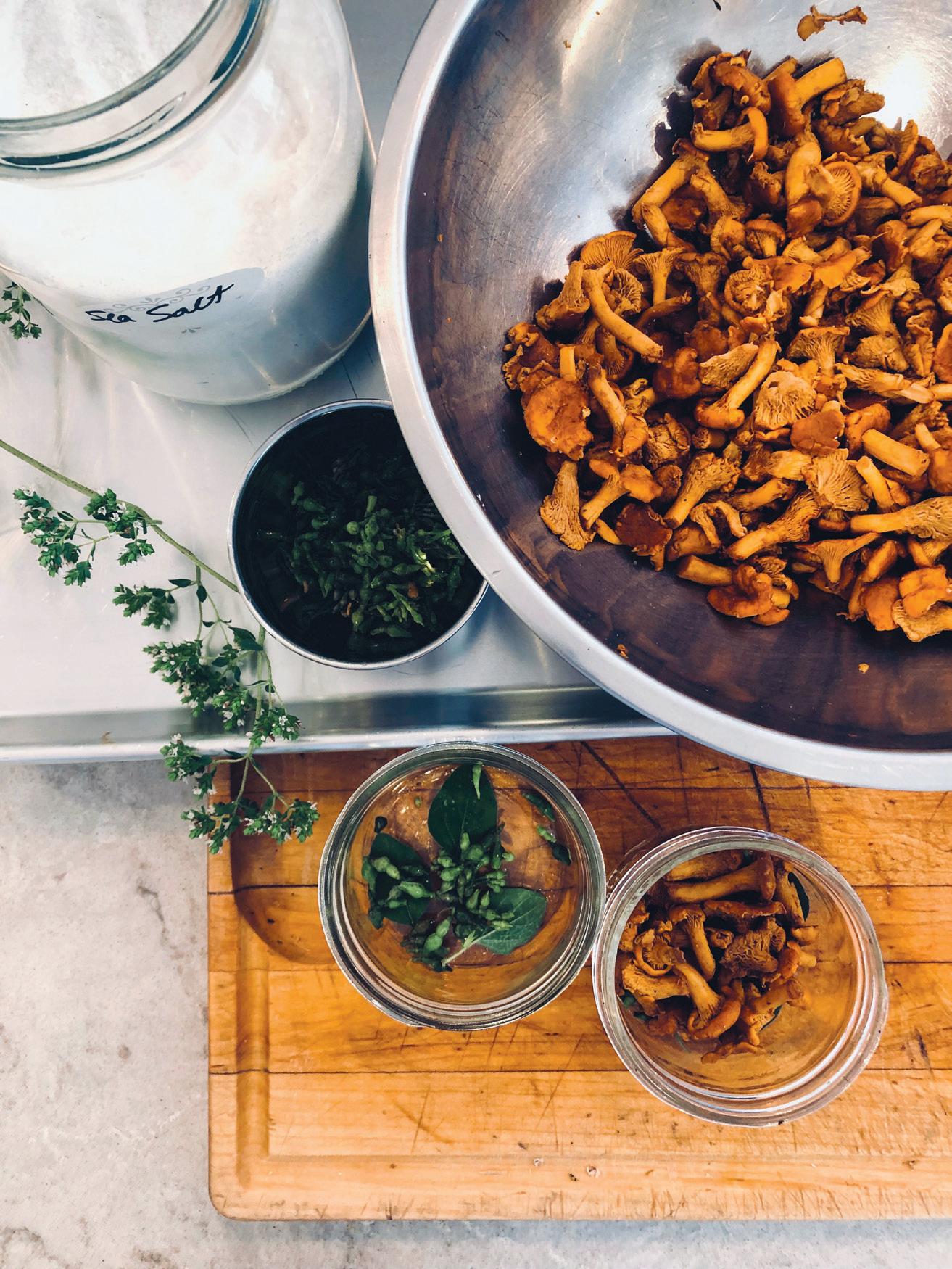
Page 14: Cleaning chanterelles
Left
Left
 Page 15: McCarthy and Tulk heading out to forage
top: A foraging path through the trees
bottom: McCarthy and Tulk with their chanterelle bounty
Right top and bottom: Preserving chanterelles in oil
Page 15: McCarthy and Tulk heading out to forage
top: A foraging path through the trees
bottom: McCarthy and Tulk with their chanterelle bounty
Right top and bottom: Preserving chanterelles in oil

Cozy up to a bowl of this deliciousness
Recipe by Lori McCarthy Photo by Marsha Tulk2 tablespoons butter, salted
2 tablespoons olive oil
1 medium onion, chopped
2 large cloves garlic, chopped
½ cup celery, chopped
1 five-ounce package fresh mushrooms, roughly chopped
1 cup favourite fresh wild mushrooms
¼ cup sherry
2 cups unsalted stock
1 cup whole milk
2 tablespoon wild dehydrated mushroom powder (optional)
1 can Fussel’s cream
¼ cup fresh parsley, chopped
¼ cup wild leeks or green onion, chopped
1 tablespoon fresh thyme
½ teaspoon pepper
1 teaspoon salt
In a large pot, heat the olive oil and butter over medium heat. Add the chopped onion and sauté for 10 minutes until lightly brown. Then add all chopped mushrooms to the onions and sauté for an additional 10 minutes.
Deglaze your pot with the sherry, making sure to scrape the bottom of the pot to release all of the browned bits. Add the stock and simmer for 10 minutes. Add the whole milk and the mushroom powder. Simmer again for 10 minutes. Add the cream, celery, parsley, leeks, thyme, pepper and salt.
Blend soup with an immersion hand blender or a counter top jug blender to the consistency of choice—fine or more chunky. This is not meant to be a thick soup, but it can be thickened with a flour/ water slurry or cornstarch blend. Reheat and serve with a lightly oiled, toasted crusty bread rubbed with a fresh garlic clove.
Enjoy!







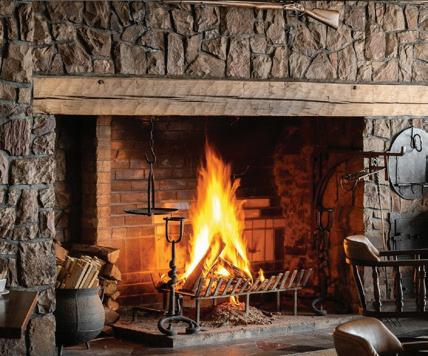


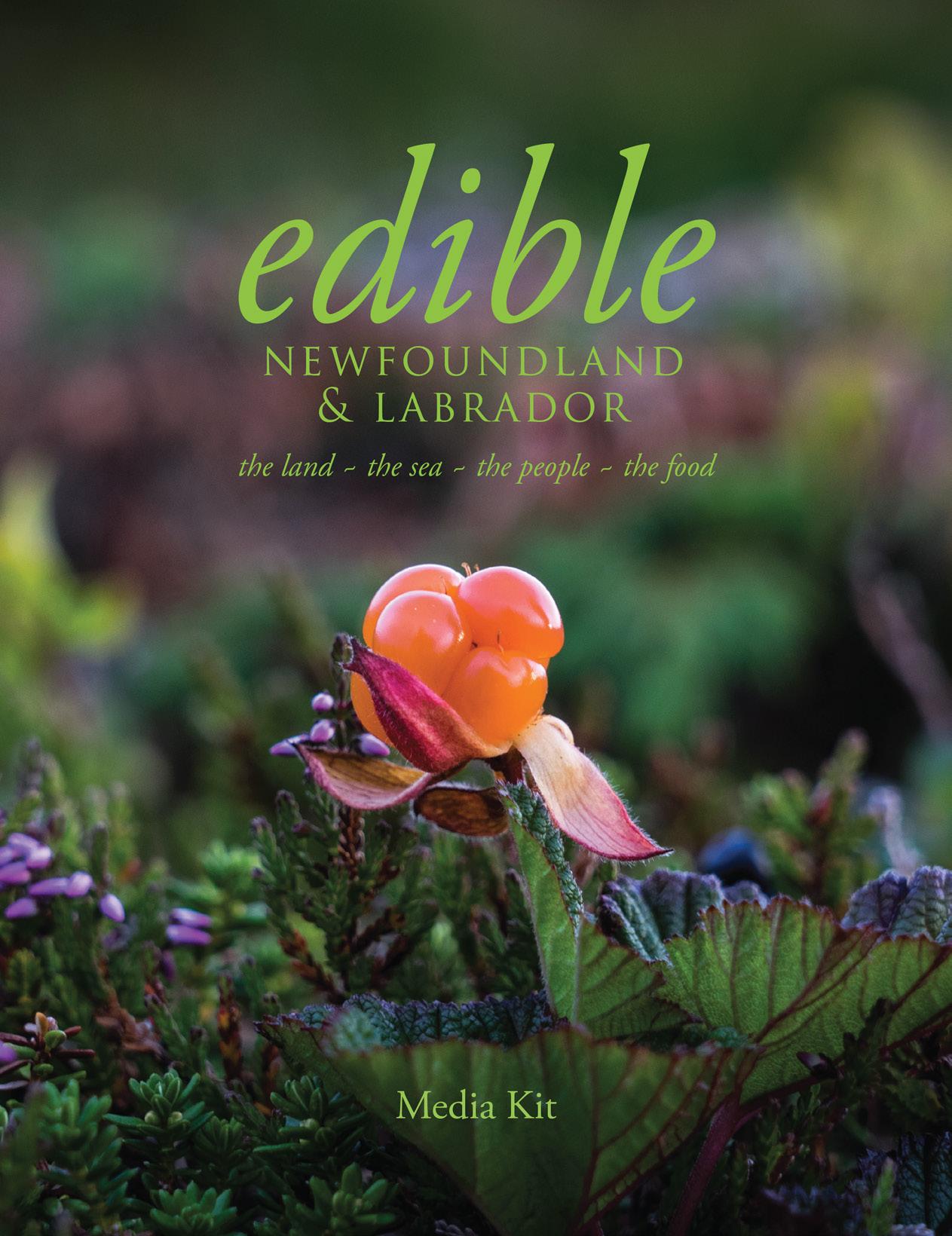




Tucked between cliffs in St. John’s east end lies the quaint fishing village of Quidi Vidi. It is home to Mallard Cottage, an unassuming, simple white building with forest green trim—a quiet exterior that belies the warmth and character within. One of the oldest residential structures in the region, its remodel as a restaurant thoughtfully marries the vibrancy of present Newfoundland with the stories of its past.
Those who pass through the venerable building’s doors each day breathe new life into its long-lived halls, where genuine smiles are shared between employees and guests and memories are made over curated dishes and drinks. The contented hum of conversation and the scent of fragrant spices from the open kitchen complement the intimate aesthetic set by moody wooden rafters strung with fairy lights. Masterfully woven throughout every aspect of the restaurant is a clear intention: to create a dining experience that will be fondly recalled for years to come.
Perched on a stool, I watch in fascination as mixologist Vivian Coen skillfully sets a bay leaf aflame to garnish
a vibrant pink drink, which she then places on the wooden bar in front of me.
As we chat easily about the restaurant’s use of local products in both the bar and the kitchen, I understand why Mallard Cottage is revered by both locals and tourists alike. And at the first taste of fresh raspberry on my lips, I look at Coen in delight, and she laughs. “It’s really crushable, isn’t?” she says. “It’s one of our most popular drinks because it’s not overpowering; it’s really easy to drink.” Firmly in agreement, I settle in, ready to enjoy every sip of what is arguably the most perfect summertime cocktail in one of the province’s most treasured locations.
Mallard Cottage
8 Barrows Rd, St. John’s, NL mallardcottage.ca
Danielle Steiner is a freelance writer and editor who enjoys taking some time for a chat and a cocktail. willowtreewords.com
Ritche Perez is a photographer based in Portugal Cove, St. Philips and St. John’s. inbetweendays.ca


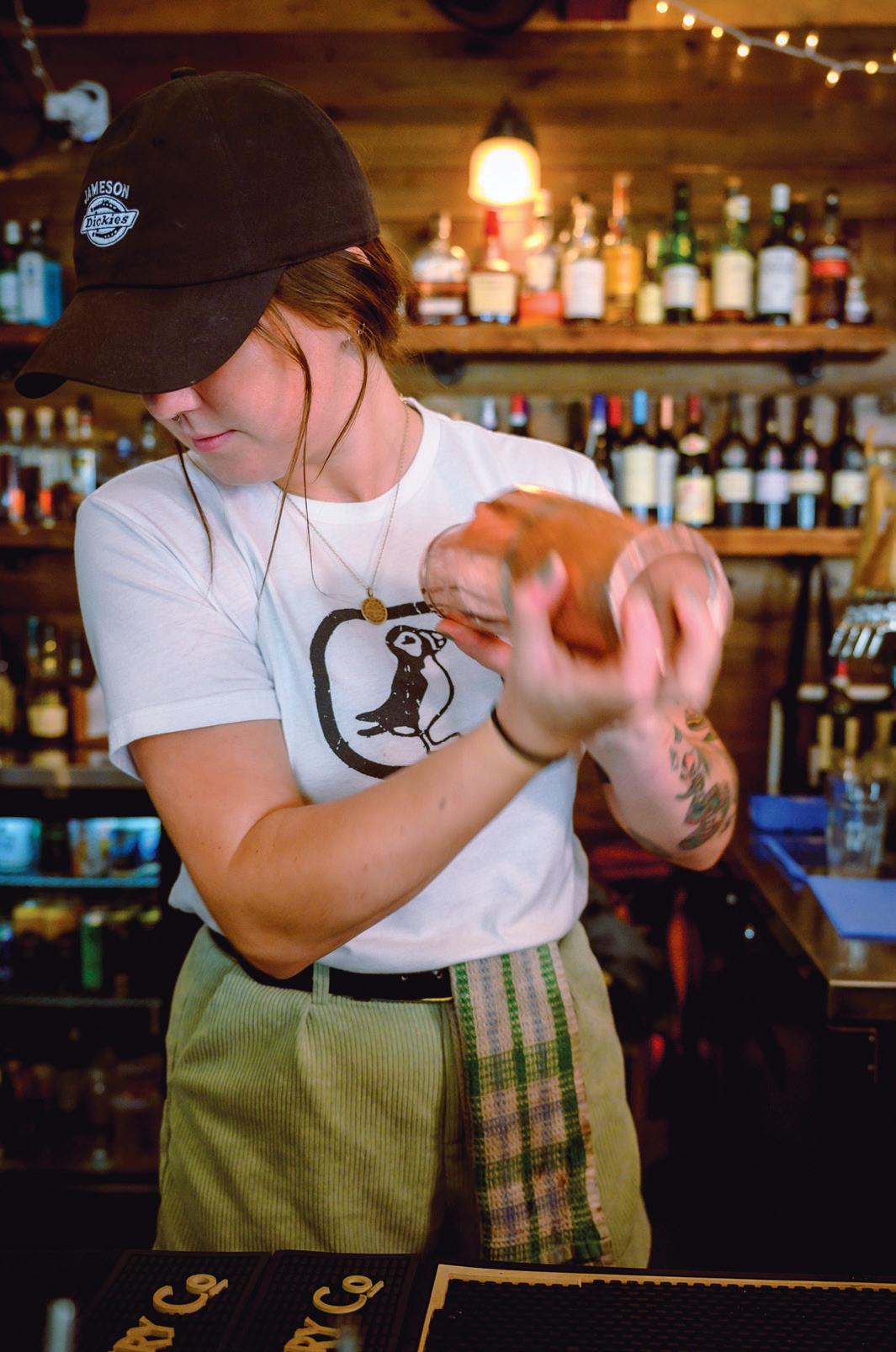

A Mallard Cottage recipe to brighten your day
1 ounce Newfoundland Distillery Co. Seaweed Gin
0.75 ounce Wild Turkey Bourbon
0.75 ounce lemon juice
0.75 ounce raspberry and bay leaf reduction
2 drops Newfoundland Distillery Co. Seaweed and Nettle Bitters
Top with Quidi Vidi Key Lime Cherry Sour
Shake all ingredients together. Place a large ice club in a glass, then double strain the mixture over it. Top with sour beer. To garnish, place a torched bay leaf on the ice cube along with a few dried cranberries.
Enjoy!
Page 21: Coen lighting a bay leaf for the Raspberry Bay cocktail
Page 22: Brianna Young and Danielle Steiner chat with Coen
Page 23 top: Coen with the shaker
Page 23 bottom: Coen finishing the cocktails
This Page: Steiner and Young toast time well spent at Mallard Cottage

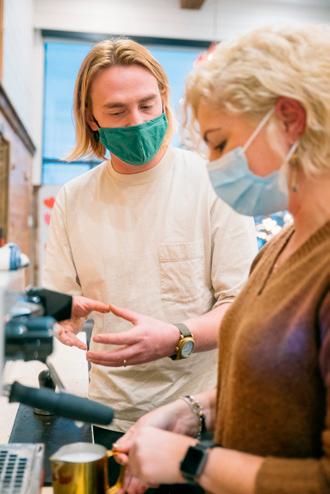







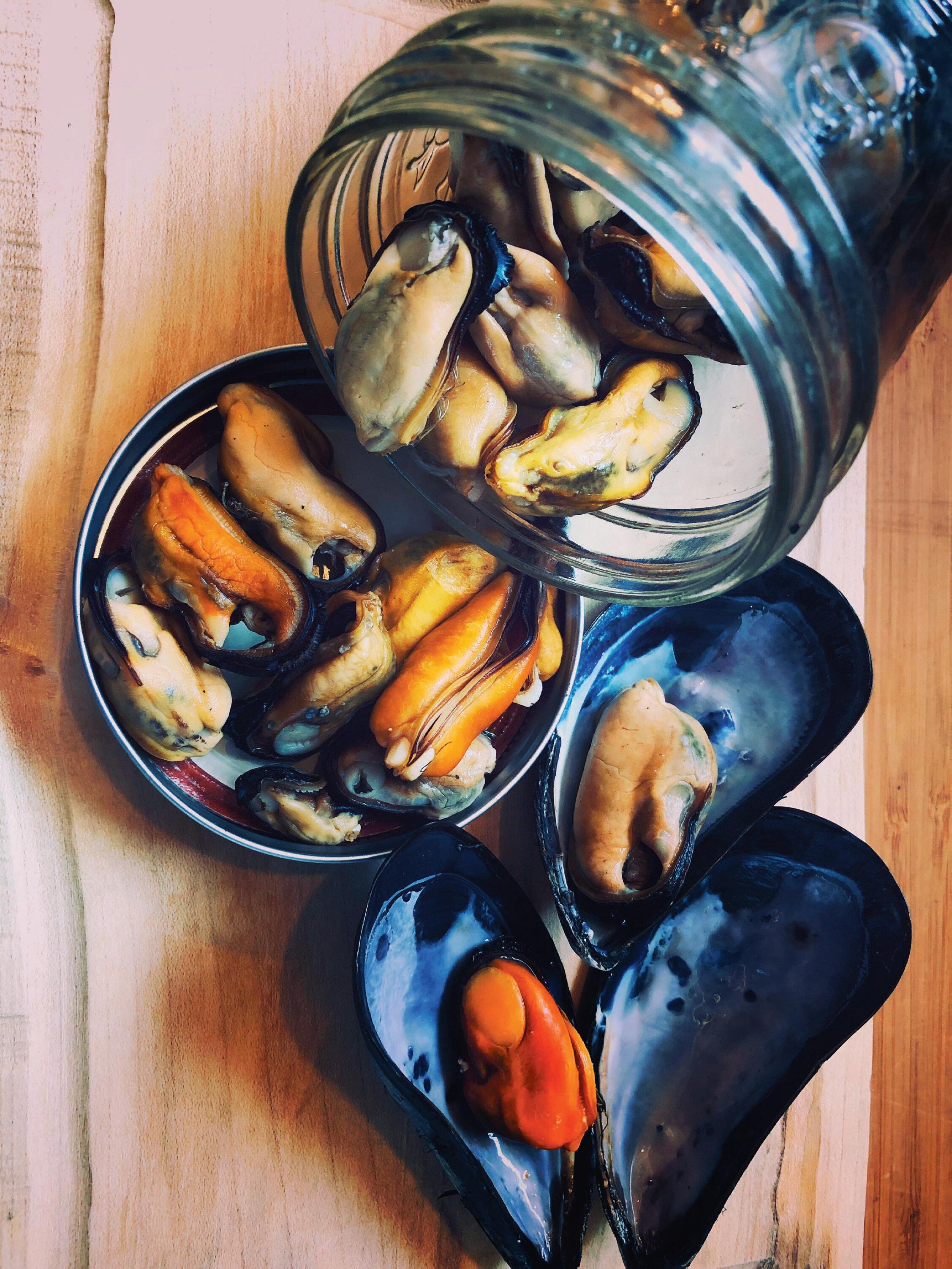
Fall is now on our doorsteps, humid days gradually transitioning to cooler nights, making it difficult to know what layers to dress with when walking the dog or picking fall berries. If you are looking for a colourful solution, half-mittens—or, fingerless mitts— perfectly fit the bill for this time of year.
Knitting is a skill I originally learned from my mother at a very young age, who learned from her father. I knit for friends and family when I need a break from creating recipes and photographing food. I have a funny feeling there will be more requests for mittens this year since the berry-picking grounds are exceptionally abundant. (I will be wearing mine as my black Lab, Maggie, tries to move in on my good patch of blueberries.) The pattern for the mitts pictured is from the 1940 Canadian Red
Cross Society booklet “Knitting Instructions for War Work,” specifically, the half-mitts pattern needed for the Army and Navy during World War I.
Let the confessions continue: I am also addicted to local homespun and hand-dyed wool. The hand-dyed yarn for the pair of mitts pictured here is from Windswept Fibres and Design in the uniquely named colours of “Best Kind,” “Wild Cove” and “Squid Jiggin’” to make the colour combo of “Mussels on the Beach.” I loved it the second I saw it in Skivvers Fibre Studio & Wool Craft, a beautiful little yarn shop in Cow Head, NL. Veronica Bavis, owner and fibre artist, focuses on beautiful yarns from local and Atlantic Canadian sources. She also makes her own brand that she spins herself from the last remaining Newfoundland heritage breed sheep in the area—a distinct breed of sheep in Canada that
Pages 28 and 29: Tulk’s socks top, and yarn from local fibre artists Skivvers, Windswept Fibres and Design, and Nova Scotia’s Fleece Artist
 Page 25: Tulk’s half mitts in the Windswept Fibres and Design colour combo of “Mussels” Left: Mussels for inspiration
Right: Tulk’s grandmother’s copy of Knitting with Homespun with Tulk’s creations using yarn from local fibre artists Skivvers and Elegantly Twisted Yarns.
Page 25: Tulk’s half mitts in the Windswept Fibres and Design colour combo of “Mussels” Left: Mussels for inspiration
Right: Tulk’s grandmother’s copy of Knitting with Homespun with Tulk’s creations using yarn from local fibre artists Skivvers and Elegantly Twisted Yarns.


developed unique characteristics over many years due to coastal community isolation.
An old booklet written as a guide to teaching new knitters in rural areas listed the local mills you could order from, but with the closing of the last wool mill in our province in 1975, the creation of local fibres had ceased. So, in 1972, Miss Anna Templeton and other dedicated individuals, while working with the Government of Newfoundland and Labrador, assembled a wonderful collection of Newfoundland knitting patterns to help preserve them for future generations. They were printed in a booklet titled “Knitting with Homespun.”
My connection to the “Operation Homespun” booklets was born from my grandmother, Roxy Hudson. She owned the two original documents dated 1974 and 1980. I strived to create more complicated garments by starting with the homespun sock pattern in the 1974 edition of the booklets. Correctly turning a heel was a triumphant day. I looked forward to someday increasing my skill level while looking at the other patterns contained in its pages, but always commented that it was unfortunate that the hand-drawn images were not a more precise representation of the finished product.
It is a goal of mine, with the blessing of the Anna Templeton Centre, to republish the “Operation Homespun” booklets in a more modern format with full-colour photographs of finished pieces using, as much as possible, local fibres and highlighting local fibre artisans. The transformation of this booklet will be a tribute to the ingenuity and resourcefulness of the educators of the art form, the rural producers of wool and Anna Templeton, who recognized the importance of craft in Newfoundland and Labrador and its continued existence in an ever-changing world. This book has the potential to inspire and educate all ages and backgrounds, as was the initial intent of the booklets. I am excited to—hopefully—bring it new life.
Marsha Tulk is a photographer, knitter, author and recipe developer. foodcultureplace.ca | @foodofgeneration


Seaspun Yarn & Coffee House provides space to spin a yarn—whether of the woollen or the story variety.
What’s the obvious next career choice for an instrumentation technician and a midwife?
Why, to open a yarn and coffee shop, of course. At least, that’s what Corinne Reid and Cara BeggReid certainly thought. The owners of SeaSpun Yarn & Coffee House in Carbonear opened the doors of the shop (and to their new chapter of life) in late 2021 and have been busy creating a community around fibre crafts ever since.
The pair have been married for 20 years, raised five children and spent many years living and working in Ontario. When Corinne’s grandfather left her a piece of land in her home province of Newfoundland, they decided to build a summer home on the property. But as the building grew, so did their love of the area, and in 2018, they decided to pack up and relocate their lives to the Carbonear region.
Cara continued to work as a midwife in Ontario, working a three-weeks-on, three-weeks-off shift. That worked fine for them until the pandemic struck, and suddenly she found herself tucked away in isolation for days at a time when she would return to Newfoundland. But, that’s when she began to knit.
“She would watch YouTube videos on knitting and that’s how she passed a lot of time in isolation,” says Corinne. “One time I joked that it would be cheaper for us to own a yarn store with the amount of yarn we kept buying.” Turns out, that joke was just a foreshadow of their life to come. Because in 2021, they decided to open a yarn and coffee shop.
Built with yarn and yeast
Their new business venture would combine Cara’s new
WORDS BY DANIELLE STEINERlove of fibre crafts with Corinne’s pre-existing love of baking. “I grew up in a baking family,” Corinne says, “so I’ve always had a love of baking.” Six months after the shop opened, Corinne enrolled in the Baking and Pastry Arts Management Program with Centennial College to further her skills. By the end of 2023, she will have written her pastry chef Red Seal exam.
Each day, she whips up a new tasty treat for customers in the shop’s tiny kitchen, based on what customers seem to be enjoying. “Right now, we seem to be stuck on cheesecake,” Corinne says with a laugh. The community has been taking note of her baking skills, and demand for her treats has grown so much that Corinne has now also opened up orders for small catered events.
Of course, as a self-proclaimed coffee shop, they were promising to offer coffee to their customers. The problem? Neither of them are actually coffee drinkers, so they didn’t have a clue where to start with that aspect of the business. “We were actually driving across the province to the ferry on our way to PEI to pick up some yarn, and we were making a list of all the things we needed to get before we opened,” recalls Corinne. “We saw a sign outside of Deer Lake for Gros Morne Coffee Roasters and decided to stop in, and we couldn’t have made a better decision.”
At the coffee roasting company, they found kindred spirits in owners David Mosher and Laurie McMichael. They helped Corinne and Cara order a coffee machine; when it arrived, they travelled across the province to help the eager entrepreneurs set it up and show them how to make coffee for their customers.
Built for community Mosher and McMichael’s kindness and willingness to help

struck a chord with Corinne and Cara, who make it a priority in both their professional and personal lives to do the same for others.
That value in their life is, sadly, one cemented in tragedy from when they lost their eldest son to the opiate crisis. They opened SeaSpun with the promise of being a safe, inclusive space for all people. “If we can be in a position to help someone, then that’s where we want to be,” says Corinne.
The communities that are forming around SeaSpun are a testament to the welcoming space that they have created. For example, if you walk into the store on any given Saturday, you’re likely to see a group of ladies gathered around with a slice of cheesecake before them and a ball of yarn beside them, spending the afternoon sharing stories and giving knitting tips to other customers. They call themselves the “Stitchin’ Bitches,” and most of them met at the workshops the store puts on.
Page 30: Lunch and menu at SeaSpun and a rug hooking class at SeaSpun
This page: Cara Begg-Reid and Corinne Reid
From socks to sweaters to weaving and spinning, SeaSpun offers a variety of classes that are welcoming to those of all skill sets. It’s a great opportunity to try something new or hone the skills you might already have. “Newfoundland has such a culture of sharing craft,” says Corinne. “We love to be a part of sharing in that.”
However, don’t expect to see either Corinne or Cara sitting around knitting—as much as they’d love to do so. “We thought we’d open a yarn and coffee shop and be able to sit and knit as much as we’d like,” says Corinne, “but running your own business is incredibly time consuming.” Yet the pair don’t seem to mind too much, taking moments instead to find joy in the people they serve and the craft they share.
SeaSpun Yarn and Coffee House
46 Powell Dr, Carbonear, NL seaspun.ca
Danielle Steiner is a freelance writer and editor with a BA in psychology and anthropology and an editing certificate, giving her unique insight into sharing engaging, meaningful stories of the people and communities she interacts with. willowtreewords.com

Artisan Alley is at the centre of the Clarenville detour you didn’t know you needed
WORDS BY GABBY PEYTON.
Clarenville is a hidden gem in plain sight. More likely than not, if you’ve travelled along the TransCanada Highway in eastern Newfoundland, you have made a stop at one of Clarenville’s gas stations. In fact, there are probably many people who think the town starts and ends with the highway strip of hotels, chain restaurants and gas stations.
It also happens to be the location of the turnoff to the heavily toured Bonavista Peninsula, known across the country for its burgeoning food and drink scene. But few know that a detour in Clarenville leads to craft ciders, artisanal pizza and even lettuce U-pick at the farmers’ market (I discovered this for the first time last summer and it knocked me off my feet; I had no idea it was there)—not to mention great coffee and cheesecake at Bare Mountain Coffee House with a view of the ocean.
As you cruise along Memorial Drive with treats from Bare Mountain, the road leads subtly into George’s BrookMilton. In recent years, the area has had somewhat of a food renaissance, leaning into the local and the artisanal. And at the centre of this is Artisan Alley, nestled on Smith Sound just after the turnoff to Random Island. There you’ll find Newfoundland Cider Company, Milton Inn and Cabin 6 Pizza. These three businesses are the quasifoster parents to artisans and crafters from all over the province who come to showcase their wares.
In the past, the quick detour many had been making was for gas and groceries on the way to Bonavista, but since the
fall of 2020, it has shifted into multi-day visits to enjoy Artisan Alley and partake in the offering of the Clarenville trio of food and drink.
“What we found is that, out where we are, we must stick together. We see the benefit of helping each other out and drawing more people here; you have a better product to offer. It’s just the way it is around the bay, isn’t it? People help each other out,” explains Chris Adams, co-owner of the Newfoundland Cider Company.
Here’s some of the delicious you’ll find on Artisan Alley.
The Milton Inn Restaurant and B&B was the first business on Stringers Lane, now known as Artisan Alley. Chef Trevor Adams and his wife Leah opened the Milton Inn restaurant in the fall of 2019, almost 20 years after his first shift as a dishwasher at the Clarenville Inn.
While Adams’ hometown is George’s Brook-Milton, like many aspiring chefs, he travelled to the mainland to attend culinary school. He went to George Brown in the early 2000s and then cooked in many restaurants throughout Ontario for a decade. And again, like many chefs, he got burned out by the lifestyle. He returned home and didn’t work in kitchens for a decade, opting to open Kenson Janitorial Services instead.
But now, Adams can spread those cooking wings again; at the Milton Inn, there is a strong focus on Italian and French fine dining cuisine but with a local touch. Dishes like moose marsala use local ingredients with artisanal cooking methods Adams learned in culinary school.

You’re as likely to see Nan’s turkey soup on the menu as you are oven-roasted bone marrow with veal glaze. For Adams, having the freedom to explore local produce and ingredients and use them in an artisanal way is paramount to the success of his restaurant, which receives glowing reviews from patrons.
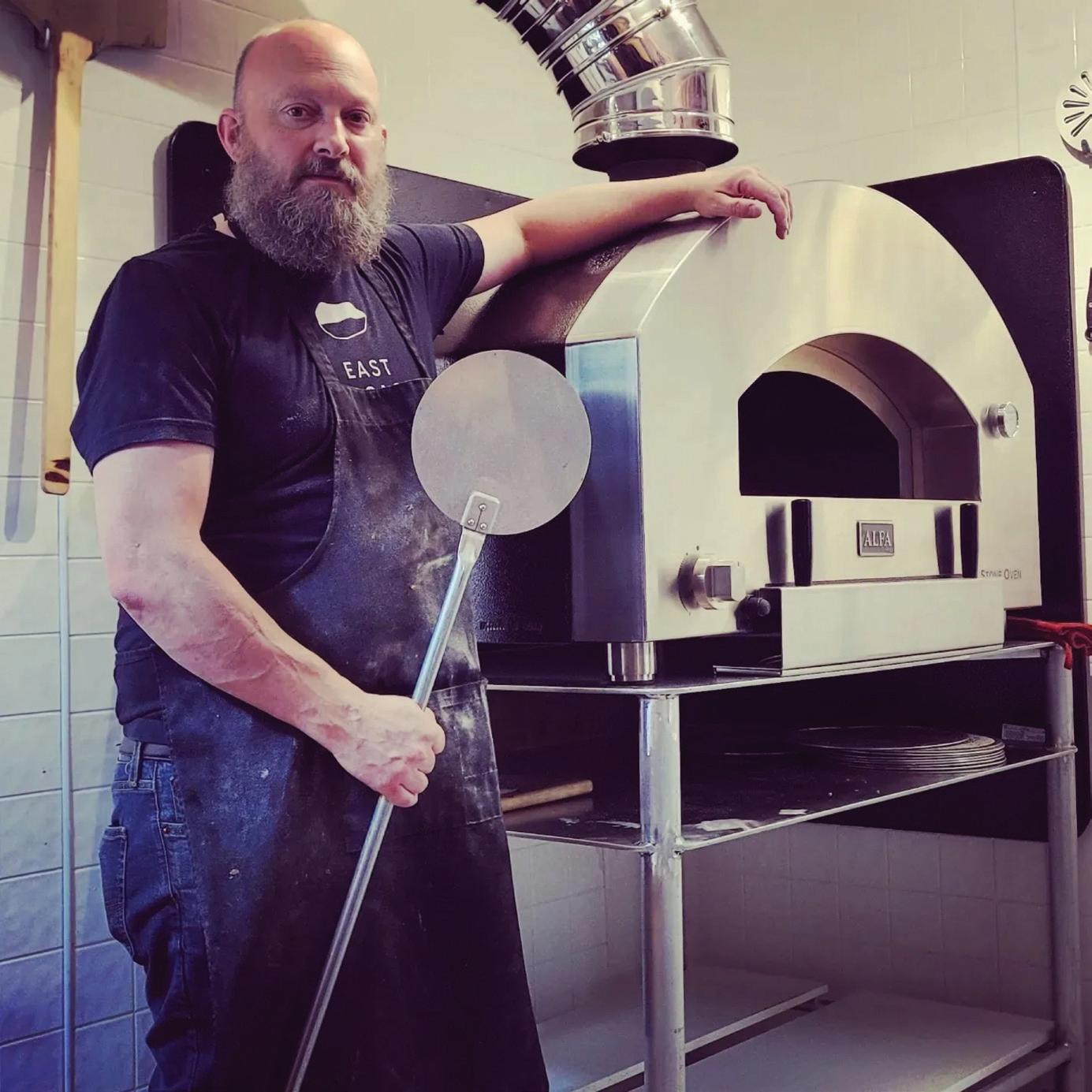
Page 33: Local apples for Newfoundland Cider
Page 34: Dinner at Milton Inn
This page left top: Derrin Reid of Cabin Six Pizza
This page left bottom: Whiskey at Milton Inn
This page top right: Newfoundland Cider offerings
This page bottom: A burger from Alexander’s Grill
Page 36: A Cabin Six pizza
Page 37: Top, inside Cabin Six Pizza; Bottom, Backyard view at Newfoundland Cider Co.
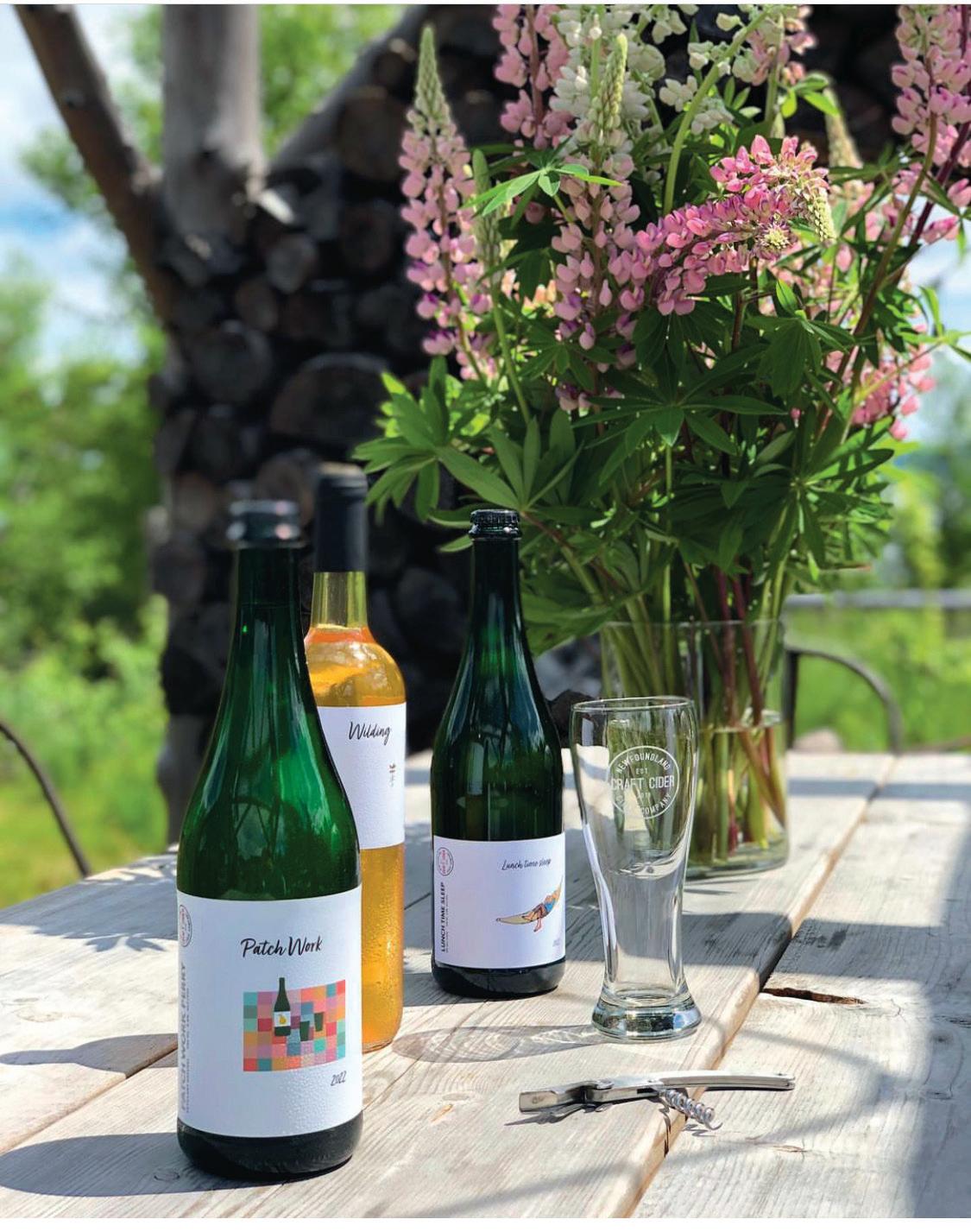


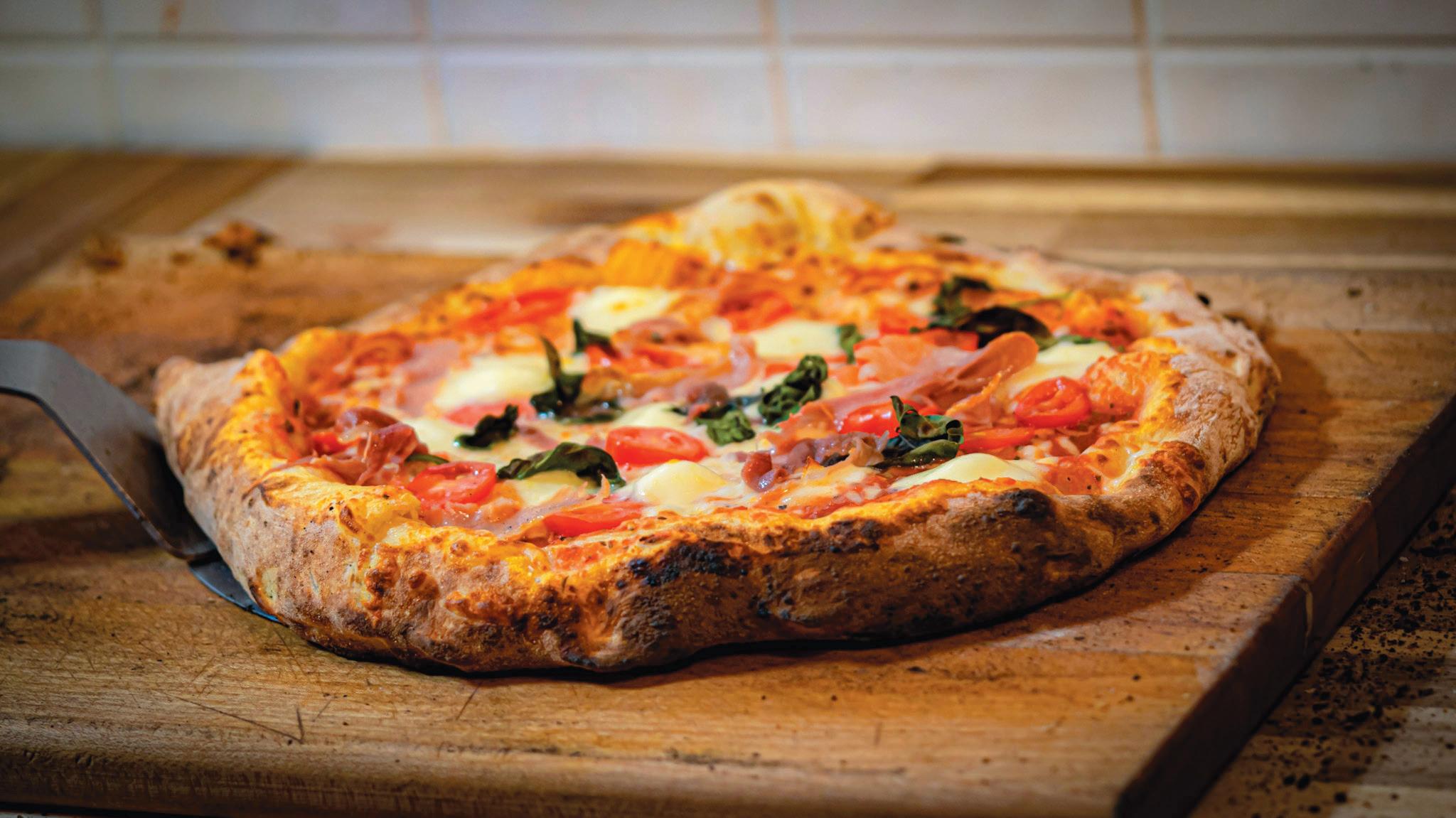
At the epicentre of Artisan Alley is the Newfoundland Cider Company, the province’s first craft cidery. Founders Chris Adams and Mark Poirier started making cider in 2016 and had their first bottles of cider ready for sale by 2018. At first, they had a small production area in another building and took about two years to get the taproom open on Artisan Alley, which they opened in the fall of 2020 in a building behind the Milton Inn.
It was the opening of the taproom in Artisan Alley that really cemented the area as “detour worthy.” Instagram stories of stopovers for a flight of NL ciders paired with stone-fired pizzas from Cabin Six began sprouting up everywhere, and many St. John’s foodies began making the Clarenville stop on the way to Bonavista.
Cabin Six Pizza is owned and operated by Derrin Reid, also known as “The Bearded Chef,” who opened his location on Artisan Alley next door to the Milton Inn in tandem with Newfoundland Cider Company, in the fall of 2020.
The stone oven at Cabin Six roars at over 900 degrees, cooking up pies in about 90 seconds, which Reid tops with local and artisanal ingredients. Crowd favourite pizzas like the caramelized onion and brie with an olive oil base is topped with pears, arugula and balsamic glaze, while the ever-popular pulled pork pizza is topped with
12-hour Newfoundland Cider-braised pulled pork with pineapple and caramelized onions, Five Brothers Artisan Cheese and topped with juniper smoked sea salt from the Newfoundland Salt Co. in Bonavista.
The latest pop-up out of Newfoundland Cider is Alexander’s Grill. Justin Alexander, the owner and operator, is another chef who returned to cooking after many years and took the opportunity on Artisan Alley to rejuvenate his love for the kitchen. Since the spring, he’s been pumping out smash burgers, BBQ chicken nachos, shawarma and even smash tacos out of Newfoundland Cider Co.
Over the course of the past few years, Artisan Alley has hosted dozens of local makers and artisans showcasing their skills and wares—from foodstuffs like Saucy Seb’s serving up BBQ and smoked brisket and Deadly Cookies out of Corner Brook to crafters like Wild Cove Pottery based in Port Union and The Ivy House jewelry from Shoal Harbour.
“Rather than thinking it’s competition, we feel that business creates business, and if we can help each other out, the small artisans, the crafts, the food makers, the foragers, then it only helps everyone,” explains Adams.
Adams says sometimes it’s almost like they are foster parents, supporting smaller makers. “We want to foster
the artisans; if no one did, there wouldn’t be any around,” he says.
Over the course of several interviews, no one on Artisan Alley seems to remember who coined the term, which speaks volumes about the sense of collaboration these artisans have. Lots of work, no credit taken—foster parents indeed.
George’s Brook-Milton, NL: The Milton Inn Restaurant miltoninn.ca
Newfoundland Cider Co. newfoundlandciderco.com
Cabin Six Pizza facebook.com/cabinsixpizza
Alexander’s Grill @alexandersgrill
Gabby
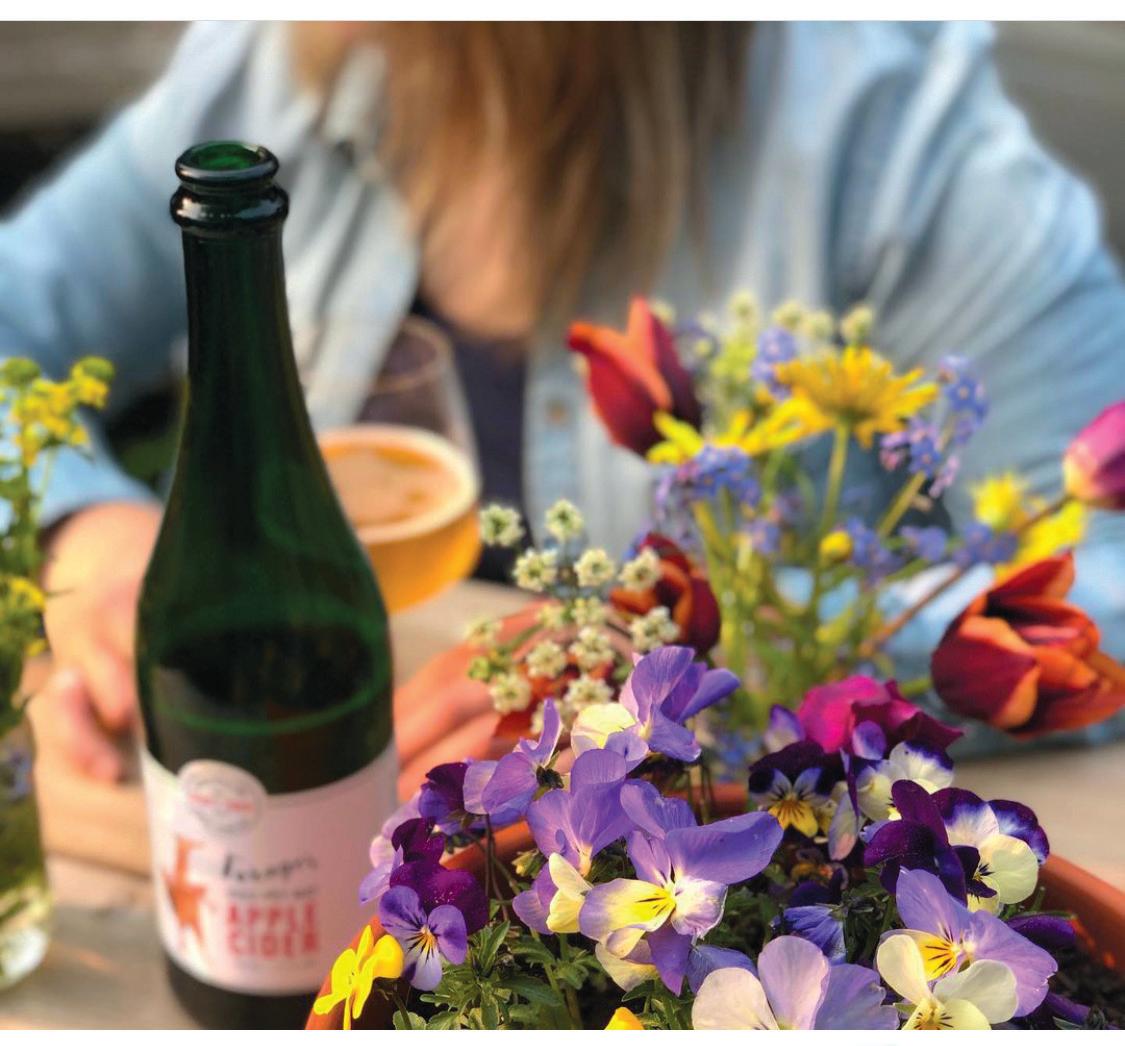
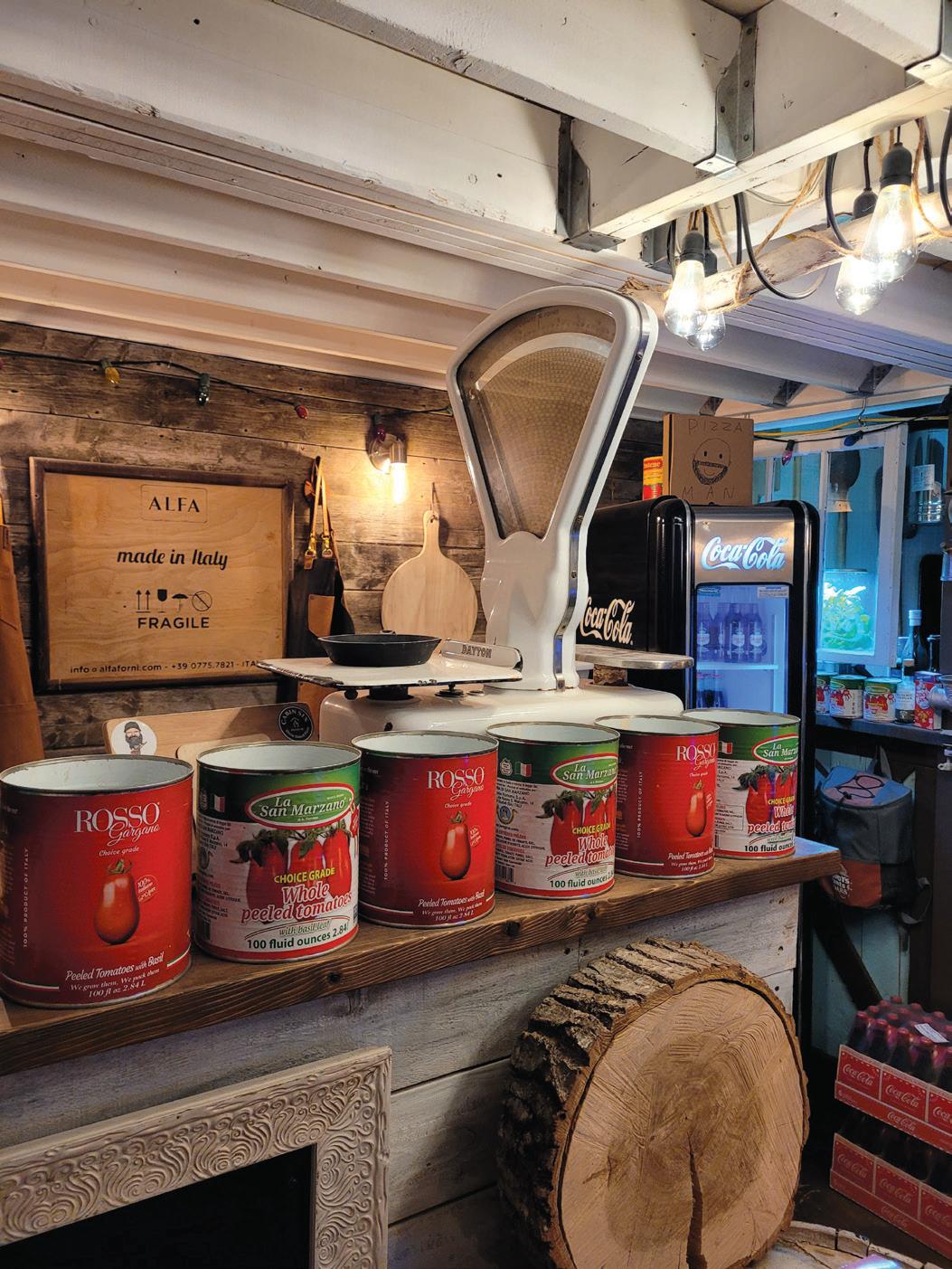 Peyton is a food and travel writer and author based in St. John’s, NL. gabbypeyton.com
Peyton is a food and travel writer and author based in St. John’s, NL. gabbypeyton.com

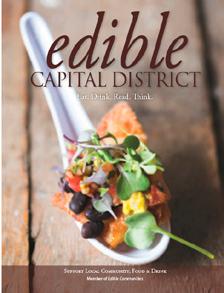
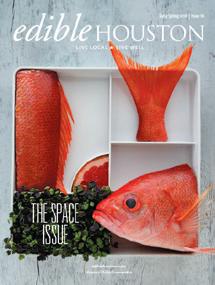







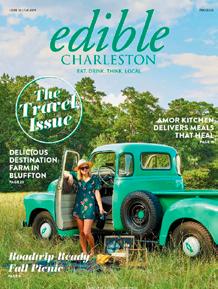

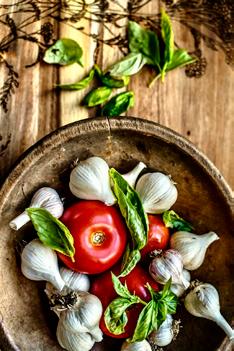


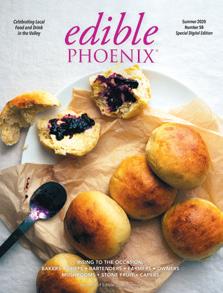



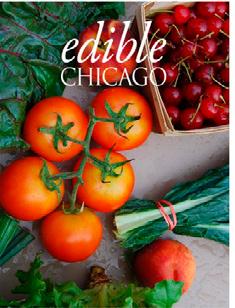
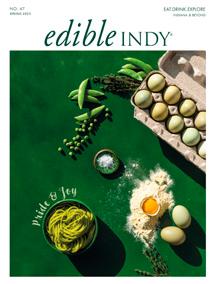
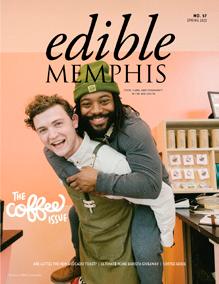

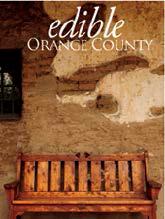

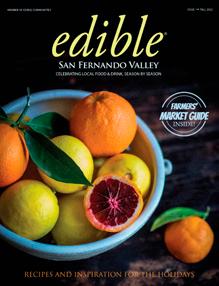
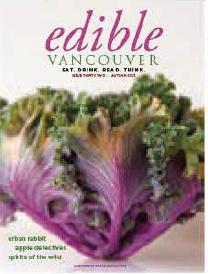





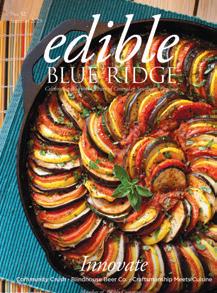



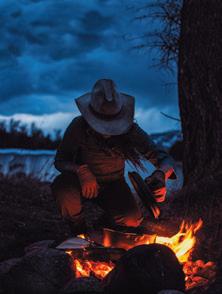







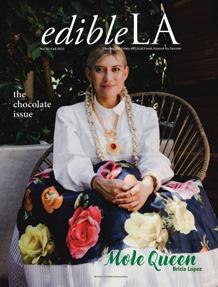
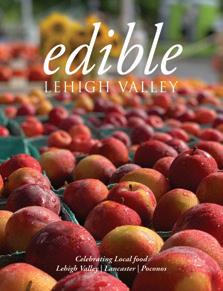

Subscribe to our newsletter! Delivered to your inbox every other Saturday morning and filled with authentic stories and inspired recipes from Edible magazines across the U.S. and Canada. Join us as we celebrate local foods season by season!



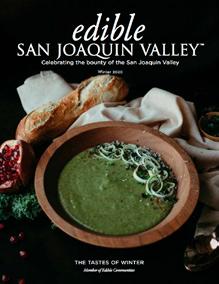

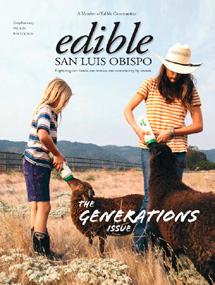



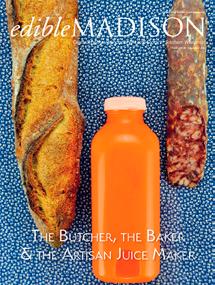
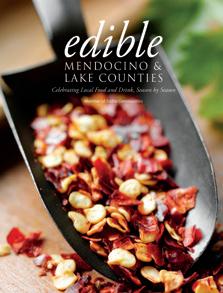
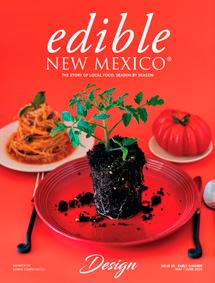
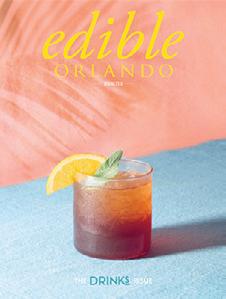
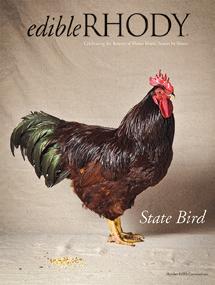








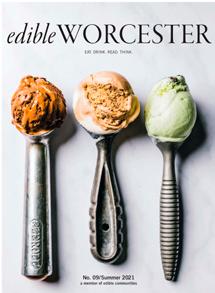



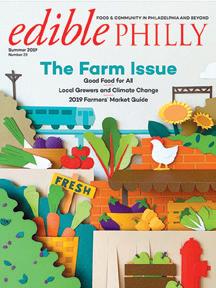



If you’ve been lucky enough to find a poem in your grocery bag, you might wonder who that poet is, or why he takes thyme to rhyme. We asked F.A. Boothroyd, poet and biologist, just that:
ENL: When did you start writing your verses about food, and what inspired you to do so?
FAB: Years ago, I was studying marine invertebrates. My love of them combined with my enjoyment of words and writing led me to write a few verses on such beasts as oysters and lobsters. They made my friends chuckle. Now I’ve expanded my fun into many foodstuffs, not just seafood.
ENL: Where do you distribute them?
FAB: I first tried selling them (the seafood ones) to PEI tourists. I printed individual poems on nice paper and framed each into a cheap plastic holder. I cleared $17 that whole summer, which, I figured, put me among the top one hundred money-earning poets in Canada. Now, decades later, I work at a grocery store and I sometimes slip a relevant little verse into the bags of my customers.
ENL: Why did you decide to share them with grocery store shoppers?
FAB: The verses I had so much fun writing were sitting in my computer—ignored, collecting laptop dust. Maybe they would bring a smile to my customers’ faces.
ENL: What are reactions from shoppers who find your verses?
FAB: “My wife and I enjoyed it more than the food”; “I have new found respect for an egg.”
What a lobster puts up with by F.A. Boothroyd
Don’t tell him he’s an introvert—should come out of his shell;
Don’t ask him whether, if you’re curt, his feelers will be hurt.
And do not waste your dripping charm, the pot now steaming hot,
By claiming he’ll come to no harm…
There’s claws for his alarm.


Not all cheeses, as you know, are gouda ‘nough to eat.
Swiss, for instance? It’s a feat to somehow swallow hole;
Yet others are a brie apart, and frankly (seems to me),
Their status stand—fetaccompli—
When all things are concheddared.
What makes cheese grate by F.A. Boothroyd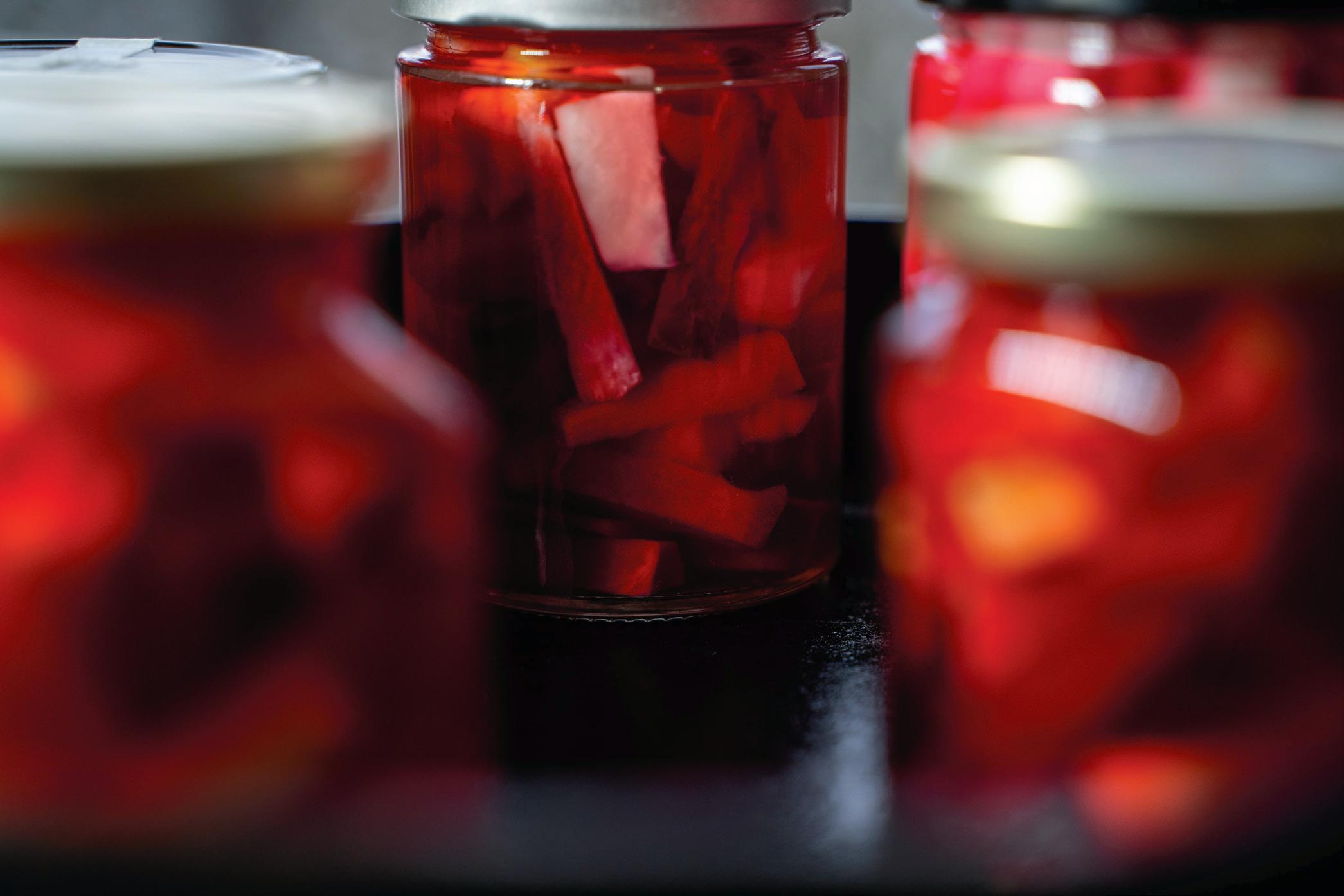
This is a simple way to preserve those fall harvest beauties—those wonderfully dense root vegetables such as beets, carrots and turnip. Add your to a sandwich, a salad, with hummus, with roast chicken or grilled fish.
4-6 sterilized 8 ounce (or smaller) canning jars with tops (see tips to the right)
4 cups root vegetables, including one or two beets (for that colour), cleaned and sliced ¼ inch thick
1 cup apple cider vinegar
1 cup water
2 tablespoons Newfoundland Salt Company fine sea salt
1 tablespoon sugar (brown sugar or honey also work)
Optional: chili flakes and/or cumin seeds
Prepare vegetables and add to sterilized jars, with chili flakes or cumin seeds if you choose, so the veggies sit vertically for the most part. In a heavy-bottomed saucepan combine vinegar, water, salt and sugar and bring to a boil. When salt and sugars are dissolved, about 3 minutes, pour brine over your veggies leaving a 1/4 cm space at the top of the jar. Place tops on jars and, when cool, tighten and refrigerate until ready to dig in.
Pickling tips:
Wash jars and tops before sterilizing. We often use the oven method, but both of these methods have worked work well for us. There are many helpful canning resources online (including videos). While your jars are sterilizing, prepare your vegetables so you are ready to place them in the jars.
Oven method:
Heat oven to 275°F and place jars upright on a baking tray, making sure to leave lots of space between the jars. Place in oven for 20 minutes. Remove with oven mitts, keeping in mind these jars are hot!
Boil method:
This method works if you have a canning pot. Place jars in the pot, ensuring they are not touching each other. Add water deep enough to cover your jars, and bring to a boil for 10 minutes. Use tongs to remove.
Let your jars cool before adding fresh veggies.
And the tops:
Place tops in a pot on stove, cover with water and simmer for 10 minutes. Strain and let dry thoroughly before using.

The earthiness of beets with the tang of feta and balsamic make this your easy go-to for lunch or as a side with your favourite roasted beast this fall.
Serves 4
4 cups cooked beets of various colours
4 tablespoons olive oil
½ cup crumbled feta
Handful fresh basil, mint or thyme leaves
Balsamic vinegar glaze for drizzle
Sea salt to taste (we suggest Newfoundland Salt
Company flake sea salt or green alder sea salt)
Edible flowers if you choose
Pecans, walnuts or pumpkin seeds
Fresh ground pepper to taste
Chop or slice cooked beets and place in a large serving dish for the table. Drizzle half of the olive oil over the beets and toss lightly. Add herbs, crumbled cheese. Drizzle vinegar glaze. Add sea salt, edible flowers, nuts and pepper.
Dig in!
Three ways to cook those beets:
Pressure cooker: This is old school, and it’s the way my mom has always prepared beets. If you have a pressure cooker and a wise mom to show you how it’s done, this is a simple (and quick) way to make tender beets. Every pressure cooker is different, so you’ll have to check the instructions for yours.
Boil: Add clean beets to pot, cover with water and add two tablespoons vinegar or lemon juice. Bring to a boil and then reduce heat, cover, simmer for one hour.
Whether you’ve used a pressure cooker or the boil method, the next step applies to both: remove from heat, rinse in cold water. Once you can easily handle them, remove skins with your fingers or a paring knife.
Roasted: Clean and peel beets, chop in half or quarters, toss with olive oil, salt and pepper. Wrap in tin foil and bake or bbq at 400°F until easily punctured with a knife.

Share in some great Atlantic Canada stories with us!